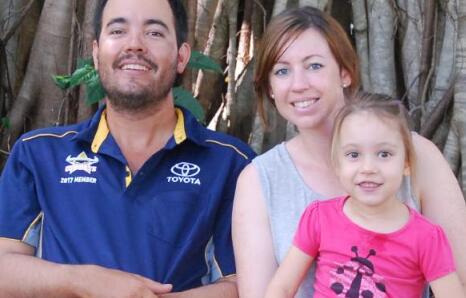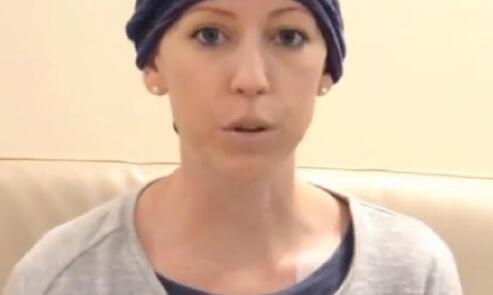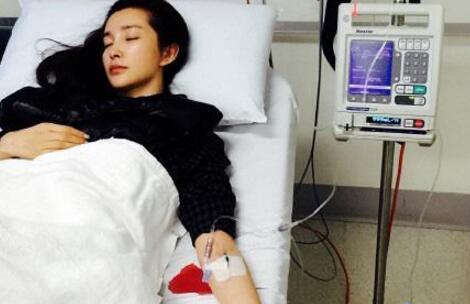Release date: 2017-09-26
From being told that the condition is serious enough to only "go home and die", after a few months, the situation is better than "returning to life". Such an incredible thing actually happened to a woman in Australia, and in this " The miracle to save her is still our Chinese hospital.

Recently, a report by the Australian media has drawn attention on the Internet. According to the article, a woman who was told by the Australian hospital that she could only "go home and die" had advanced cervical cancer. After going to a hospital in China for treatment, she actually "returned to life" and the situation improved greatly. In this regard, some Australian netizens feel that the local medical level is overestimated and that Chinese medical skills are at the forefront. Some Chinese netizens who have studied or lived in Australia say that the medical level of the motherland is higher than that of Australia, so it is better to go to the country to see a doctor.
According to the Australian News Network, the 30-year-old Australian woman Emily Woodman and her husband Mark are doing business together, and a 4-year-old lovely daughter, the family is happy. However, in December 2016, a bad news caused the family to suffer: Emily was diagnosed with stage 4 cervical cancer by a local doctor, leaving only 12 months. She was also told that it was too late for any surgery or radiotherapy, and that the hospital could only use the palliative chemotherapy (a palliative chemotherapy) to get the "final journey".
However, Emily did not give up easily, she thought that even if she had cancer, she could still try a variety of different therapies. As the disease worsened, Emily visited countless doctors in the country, including oncologists, alternative therapists and so on. However, most doctors told her that it was too late to give her a morphine and cough medicine to let her go home. "I couldn't walk, talk or bend over at the time. It was like drowning. The doctors told me that there was no hope, go home and die, life is too unfair," Emily recalls.

However, one of the doctors saw Emily's situation so serious, and made a bold idea, that is, let her go to a hospital in China to try out whether local cutting-edge therapy works for it. As a result, since March 2017, Emily has traveled to the Cancer Hospital in Guangzhou, China for 5 times, spending $150,000 on interventional, immunotherapy and cryotherapy. Subsequently, the miracle happened. After only three months, Chinese experts said that her tumor cell count was controlled in the normal range and the blood test results were normal. A few months ago, Emily was told that her death was coming, but now she never felt so good: "My lungs have collapsed and filled with liquid. But (Chinese) doctors from me Three liters of fluid was drained from the lungs, and then I was given chemotherapy. My cough stopped immediately and there were no symptoms since then."
In this regard, the doctor who advised her to go to China said: "The situation of Emily is already serious enough to not respond to traditional radiotherapy. I know that Chinese hospital will provide comprehensive treatment for chemotherapy and other drugs. Her condition is It’s great to get better, and telling the truth is like returning to life.â€
The Australian media said that Emily from Queensland was not the first Australian to embark on this adventurous treatment journey. Thousands of advanced patients have sought to spend financial resources to go abroad to pursue the last glimmer of life because they have no further choices in the country. They usually set up fundraising pages to seek financial help.
Now, Emily is still working hard. She said: "As long as I want to receive treatment, I can get treatment. The only thing that can stop me is money. I feel like I am just like normal people. If (treatment in China) I can give me more time with my daughter for a few years. What a good thing!"

Do you feel that this incident is familiar? Overseas Jun carefully thought about it and found that as early as 2015, some people came to China to seek medical treatment in Australia, and this person is our Chinese actor Li Bingbing. At the end of 2015, Li Bingbing had a high fever for 16 days while working in Australia. People had collapsed and could not walk. However, Australian doctors said they could not diagnose the cause. Therefore, Li Bingbing could only force his body to fly back to the motherland overnight, and was directly sent to the hospital after landing. After the hospital examined, it was diagnosed with suppurative tonsillitis, and the tonsils were already white, unable to speak or eat. Fortunately, the actress chose to return to China for treatment in time. Recalling the tragic experience of being bleeding in Australia, Li Bingbing could not help but say "super miss the health care workers in the motherland."
Western countries, including Australia, have long been considered to be at the top of the medical level. Therefore, it seems a bit unexpected when I heard the news that Australians went to China for treatment. However, some foreign netizens said in their comments that Australia's medical level has been overstated, and that there is a problem of “treating the symptoms and not treating the problemâ€, and it is not surprising that China's medical skills are at the forefront.

A foreign netizen said, “From my personal experience, I think the evaluation of Australian medical professionals is too high. The population of Asia is far greater than that of Australia, and their life expectancy is longer because their medical staff will focus on treating diseases. The roots, not the symptoms." Another netizen admitted that most of the local experts and general practitioners are not competent. Some Australian netizens expressed their "envy of envy" in Chinese medicine, saying: "The history of Chinese medicine is much longer than that of Western medicine, and the Chinese are also one of the smartest people on the planet. So why (its medical care) Can't be at the forefront of the world?"

In this regard, some Chinese students who have studied in Australia have also expressed their views. A Chinese netizen said: "I will go back to China after I see a doctor. Australia is expensive and can't look good." Another netizen named Tim said: "Don't say anything else, although the doctor-patient relationship often occurs in China, the actual situation is that China's medical level is much higher than that of Australia. First, doctor experience, domestic good doctor There are a lot of people who see a doctor every day, and there are many kinds of incurable diseases, so the clinical experience is very rich. Australia is basically waiting, first observe, then wait. Australian doctors are more convinced that instrumental analysis. Second, medical equipment, Australia's medical devices and Chinese medical devices will be better in Australia than in Australia. The level of Australia (Australia) is limited in terms of teeth and sight."
In response to the richer clinical experience of Chinese doctors, many netizens have also echoed. LIndia said: "The domestic doctors have enough experience to know what is going on at a glance. One of my relatives is also unable to be diagnosed in Australia. The doctor who returned to China will be diagnosed at the first sight. There are many similar cases, and the problem is solved by familiarity. "Yelling also said: "The high medical level of Tuao is mainly reflected in the hardware facilities. The clinical experience is personally rich."
Source: Overseas Network
Nootropics powder or Nootropics, are a diverse group of cognitively enhancing compounds that are classified as lassi, plant, Vitamin and fuel
I. Lassie drugs to promote wisdom
Rasciates are based on the compound piracetam and tend to work by enhancing the corpus callosum (the brain region that connects the two hemispheres), which can positively affect creativity and speech, acting as a glutamate or AMPA regulator (a subclass of neural receptors involved in learning and memory), brain circulation, brain metabolism, and more.
Lassi is the first class of psychotropic drugs that have been studied based on the naturally occurring amino acid Pyroglutamate (5-oxopyrrolidine-2-carboxylicacid). Most of them work by using glutamate receptors as agonists (compounds that mimic or enhance receptor activity) to enhance and enhance cognitive function. They are non-toxic, safe and do not have any addictive effects.
Piracetam, known chemically as 2-oxo-1-Pyrrolidineacetamide, is the most popular of the rascicidal drugs. Piracetam is known as nootropil in other countries. Piracetam is water soluble and is the best Nootropics studied. Piracetam is used in more than 100 countries and has been shown to improve articulation, memory, concentration, overall cognition and more.
Anisetan (anethacetam) is a fat-soluble form of piracetam, which is known in some countries as Ampamet. It's fat-soluble, and it's an ampakine drug (a class of compounds being developed by DARPA to create mind-enhancing super-soldiers).
NeuroPEPT, chemically known as n-phenylacetyl-L-Prolylglycineethylester, is a novel aminate glycine and a precursor of a naturally occurring peptide in the human brain. It is 1000 times more effective than piracetam and has high bioavailability. It is considered to be the third generation of lasciform nootropics.
2. Plant drugs promoting wisdom
These compounds are found in plants (or produced by plant compounds) to actively support cognitive or emotional health. Huperzine A (L-hupezine) is a common example of a plant nootropics. Huperzine A is an alkaloid extracted from the endemic Chinese plant Huperzine. Studies around the world have found that huperzine A can enhance memory, improve memory impairment, improve the efficiency of mental activities, senile memory decline and alzheimer's disease, adolescent learning disability and memory enhancement have significant improvement effect.
Three, vitamin drugs to promote wisdom
These compounds of vitamin stimulants have improved absorption, nootropic effects, and reduced side effects. They are made from vitamins or natural compounds found in the brain. They are very safe and non-toxic and have a long history of research and use around the world.
Enhanced versions of vitamins or related compounds are more effective than their counterparts. Such drugs include edibenquinone (associated with coenzyme Q), pyrimercaptan (associated with vitamin B-6), Picamillon (associated with GABA and vitamin B-3), Fenebute (associated with GABA), methylchlorophenol hydrochloride (associated with dimethylaminoethanol), and more.
Iv. Fuel drugs promoting wisdom
Fuel enhancers are compounds that act as precursors of major neurotransmitters and act as "fuel" for the brain. Such drugs include :ALC, phosphocholine, cyticoline, DMAE, chlorophenol hydrochloride ester, theanine, tyrosine, etc.
Citicoline is a source of choline that has been shown to improve memory and cognitive function. Citicoline is a water-soluble nootropic of the choline chemistry. CDP choline can be used to increase dopamine receptor density and is reasonably used to treat or contribute to ADHD. Acetylcholine is a neural receptor involved in memory processes and development in the brain. Citicoline helps to promote brain health by increasing acetylcholine synthesis and development in the brain and restoring the level of lecithin. It helps increase brain glucose metabolism and brain blood flow.
Phosphocholine is a phospholipid metabolite found concentrated in the membranes of neurons. It comes from lecithin, which is very well absorbed and crosses the blood-brain barrier. In the brain, phosphocholine supports brain function and learning processes by directly increasing acetylcholine synthesis and secretion. Phosphocholine acts as a precursor membrane phospholipid to support neuronal health and improve signal transmission
best nootropic powder,nootropic powder to buy,buy Nootropic Powder
Shaanxi YXchuang Biotechnology Co., Ltd , https://www.peptide-nootropics.com